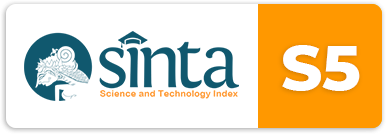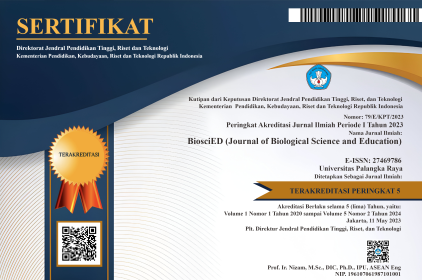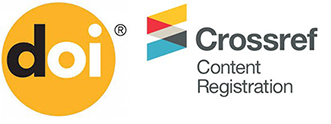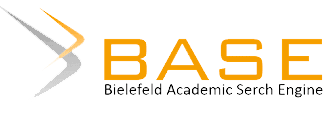Ethnobotany of Paludicrops in Pilang Village, Pulang Pisau Regency
Etnobotani Paludicrop Di Desa Pilang Kabupaten Pulang Pisau
DOI:
https://doi.org/10.37304/bed.v3i2.5292Keywords:
Etnobotani, paludicrop, Teknik budidaya, Desa PilangAbstract
Abstrak
Pengetahuan dan informasi mengenai pemanfaatan tumbuhan pertanian rawa gambut khususnya tumbuhan pangan (paludicrop) masih sangat terbatas. Penelitian ini bertujuan untuk mengetahui jenis-jenis tanaman paludicrop yang dimanfaatkan sebagai sumber pangan dari masyarakat di Desa Pilang, Kabupaten Pulang Pisau, Provinsi Kalimantan Tengah. Penelitian dilakukan melalui pendekatan deskriptif kualitatif dengan metode observasi, survei dan wawancara dengan teknik snowball sampling. Hasil penelitian menunjukkan bahwa terdapat 7 jenis paludicrop yang dimanfaatkan sebagai sumber pangan yaitu: Sagu/Hambie (Metroxylon sagu Rottb), Rotan/uwei (Calamus trachycoleus L), Bakung Sayur (Crinum asiaticum L), Pakis Sayur/genjer (Limnocharis flava (L) Buch), Pakis Udang/kalakai (Stenochlaena palutris), Talas/kujang (Colocasia esculenta (L) Schott) dan kangkung air (Ipomoea aquatica). Menurut responden, bagian organ tumbuhan yang paling banyak dimanfaatkan adalah batang muda (71%) dan daun muda (57%) dengan cara pengolahan yaitu direbus dan ditumis, sedangkan cara mendapatkan bibit tanaman beragam.
Abstract
Knowledge and information regarding the utilization of peat swamp agricultural plants, especially food crops (paludicrops) are still very limited. This study aims to determine the paludicrops used as a food source for the community in Pilang Village, Pulang Pisau Regency, Central Kalimantan Province. The research was conducted through a qualitative descriptive approach with observation, surveys, and inventory of plants, and also interviews with snowball sampling techniques. The results showed that there were 7 species of paludicrops that were used as food sources by the people of Pilang Village, namely: Sagu/Hambie (Metroxylon sagu Rottb), Rattan/uwei (Calamus trachycoleus L), Bakung Sayur (Crinum asiaticum L), Pakis Sayur/genjer (Limnocharis flava (L) Buch), Pakis Udang/kalakai (Stenochlaena palutris), Taro/kujang (Colocasia esculenta (L) Schott) dan kangkung air (Ipomoea aquatica). Based on the results of the interviews, it was found that the most widely used parts of the paludicrops as food were young stems (71%) and young leaves (57%); with the most food processing methods by making into a clear soup and stir-frying, while there are various ways to get plant seeds.
Downloads
References
Ancrenaz M, Gumal M, Marshall AJ, Meijaard E, Wich SA and Husson S. (2016). Pongo pygmaeus. The IUCN Red List of Threatened Species 2016: e.T17975A17966347.
Budiman, I., Bastoni, Sari, E. N. N., Hadi, E. E., Asmaliyah, Siahaan, H., Januar, R., Hapsari, R. D. (2020). Progress of paludiculture projects in supporting peatland ecosystem restoration in Indonesia. Global Ecology and Conservation, 23, e01084. doi:https://doi.org/10.1016/j.gecco.2020.e01084
Giesen, W. (2013). Paludiculture: sustainable alternatives on degraded peat land in. Quick assessment and nationwide screening (QANS) of peat and lowland resources and action planning for the implementation of a national lowland strategy. QANS Lowland Development. Euroconsult Mott MacDonald & Deltares. Laporan untuk Bappenas & Ditjen Sumber Daya Air, PU, Pemerintah Indonesia.
Giesen, W., & Nirmala, E. (2018). Tropical peatland restoration report: The Indonesian case. Berbak Green Prosperity Partnership, MCA-Indonesia, Jakarta.
KLHK. (2017). Indonesia Ministerial Regulation of Environment and Forestry No. P.16/MENLHK/SETJEN/KUM.1/2/2017 on Technical Guidelines for the Restoration of Peatland Ecosystem Functions. Jakarta, Indonesia. https://gambut.oirto.com/permen-no-16-tahun-2017-pedoman-teknis-pemulihan-fungsi-ekosistem-gambut/
Nolan J. M & Turner, N. J. (2011). Ethnobotany: The Study of People–Plant Relationships in Ethnobiology. Edited by E. N. Anderson, D. Pearsall, E. Hunn, and N. Turner. Published by John Wiley & Sons, Inc.
Page, S. E., Rieley, J. O., and Banks, C. J. (2011). Global and regional importance of the tropical peatland carbon pool. Global Change Biology, 17, 798–818.
Pl@ntNet. (2021). World Flora. https://identify.plantnet.org/. Diakses tanggal 20 Oktober 2021.
Purwanto, Y. (2004). The Ethnobiological Society of Indonesia. J Tropic Etnobiol 1(1):3-5.
Tata, H.L., Susmianto, A. (2016). Prospek Paludikultur Ekosistem Gambut Indonesia. FORDA PRESS.
Tjitrosoepomo, G. (2005). Dasar – Dasar Taksonomi (Cetakan Ketiga). Yogyakarta: Gadjah Mada Universitas press.
Uda, S.K., Hein, L., Sumarga, E. (2017). Towards sustainable management of Indonesian tropical peatlands. Wetlands ecology and management, 1-19.
Uda, S.K., Hein, L. & Atmoko, D. (2019) Assessing the health impacts of peatland fires: a case study for Central Kalimantan, Indonesia. Environ Sci Pollut Res 26, 31315–31327.
Uda, S.K., Hein, L. & Adventa, A. (2020). Towards better use of Indonesian peatlands with paludiculture and low-drainage food crops. Wetlands Ecol Manage 28, 509–526.
UNEP (2010) ."What is biodiversity?". United Nations Environment Programme, World Conservation Monitoring Centre. Diakses tanggal 8 Juni 2021. https://www.unesco.pl/fileadmin/user_upload/pdf/BIODIVERSITY_FACTSHEET.pdf
Wichtmann, W. & Joosten, H. (2007). Paludiculture: peat formation and renewable resources from rewetted peatlands. IMCG-Newsletter 2007/3: 24-28.
Downloads
Published
How to Cite
Issue
Section
License
Copyright (c) 2022 Saritha Kittie Uda, Juleha Juleha

This work is licensed under a Creative Commons Attribution 4.0 International License.















